Countries with the Most Cultural Diversity: The most culturally diverse countries are those that welcome a diverse variety of races, languages, faiths, and customs inside their boundaries. These civilizations are lively and cosmopolitan because they contain a rich tapestry of many cultures coexisting and interacting.
These nations demonstrate how multiple cultures can survive and prosper, generating a rich and diversified social fabric. Cultural variety not only enriches a nation’s wealth, but it also fosters understanding, tolerance, and the interchange of ideas among its population. This article examines some of the most populous countries, as well as those with a diverse cultural heritage.
Recommended: How To Choose The Right Guy Between Two: 10 Tips
Top 10 Countries with the Most Cultural Diversity
1. Chad: Central African landlocked Chad has various areas. Lake Chad, the country’s biggest wetland, comprises desert, dry, and fertile savanna zones. Chad, Africa’s 5th-largest nation, borders Nigeria, Cameroon, the Central African Republic, Sudan, Libya, and Niger.
Chad’s population is diverse.Chadians are mainly categorized by geography. South-dwelling Sara are the biggest ethnic group. The second-largest ethnic group in the Sahel, the Arabs, coexist among sedentary people. The Toubous are northern nomads. Chad has 51.8% Muslims, 43.8% Christians, and 4.4% atheists, agnostics, or other religions. Muslims are 58% Sunni, 11% Shia, 4% Ahmadi, and 23% nondenominational. 54% Protestant and 46% Catholic.
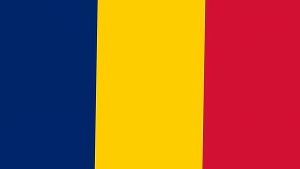
Most of Chad’s underprivileged inhabitants are herders and farmers. The Fund for Peace deems Chad unsuccessful. Chad has 39% polygamous women. Also legal. Female genital mutilation and violence are frequent in Chad. Despite being illegal, about 45% of women get the surgery, especially Arabs. Chad has a 47-year lifespan. 18,278,568
2. Cameroon: The Baka, or pygmies, are the indigenous people of Cameroon. Next to the 31% Cameroon Highlanders, they are the longest-living indigenous peoples. 19% of Equatorial Bantu are estimated. Cameroonians are mostly Kirdi and Fulani.
Cameroonians have big families with polygamous and monogamous marriages. Over 60% of Cameroonians are under 25 due to big households with several children. Cameroonians have a median age of 18.5 and a life expectancy of 59.
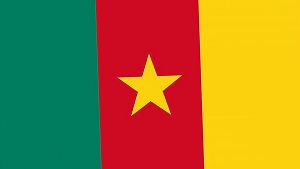
English and French are the official languages, although at least 24 main African language groupings are spoken. Cameroon is 70% Christian. 21% are Muslim, and 6% still practice ancient indigenous religions (CIA, 2018). Muslim Cameroonians live in the north, whereas Christian Cameroonians are in the south and west.
Also see: Advantages and Disadvantages of Military Rule
3. Nigeria: The Federal Republic of Nigeria is on Africa’s western coast. 36 states and Abuja make up Nigeria. Nigeria gained independence from the UK on October 1, 1960, and has over 500 ethnic groupings and several languages. Nigerians are young. The country’s median age is 18.4 for men and women. Nigeria has an even gender split. Men outnumber women somewhat.
Estimates put the country’s male-female ratio at 1.04. Though males outweigh women, women outnumber men after 65. Nigeria has several ethnicities. 30% of the population is Hausa-Fulani. Most Hausa-Fulani are Muslim. The second-largest ethnic group is the Yoruba (15.5%), followed by the Igbo (15.2%).
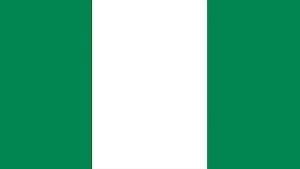
Nigeria has several languages, but English is its official language. Hausa, Yoruba, and Igbo are the most prevalent non-English languages. Besides English, those three languages are mainly spoken. Nigeria is mostly Christian and Muslim. Sunni Muslims dominate the north, while Christians dominate the centre and south. In 2010, 45.5% of the population was Muslim.
4. Togo: One of Africa’s smallest nations, Togo covers 21,925 square miles (56,785 square kilometers) in the west. Togo ranks 127th in size. Togo borders Ghana, Benin, Burkina Faso, and the Gulf of Guinea. With 356 persons per square mile (137 per square kilometer), it ranks 66th in population density worldwide. Togo is religiously varied, however the figures are disputed.
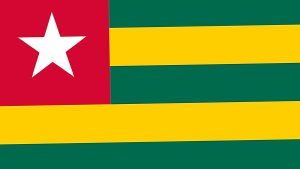
According to a University of Lomé study, 33% of the population practices Animism (an indigenous belief system that believes every person, place, and thing on earth contains its spiritual essence), 28% are Catholic, 14% are Sunni Muslim, 10% are Protestant, and 10% are another sect of Christianity. When consolidated, Christians dominate Animists, but many faiths, including Christianity, integrate indigenous traditions.
5. Dr. Congo: Sub-Saharan Africa’s Democratic Republic of Congo is mostly landlocked. DR Congo has around 250 ethnic groupings, although 80% are Bantu. Central Sudanic/Ubangian, Milotic, and Pygmy peoples are others.
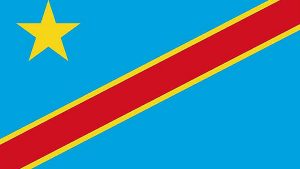
Lingala, Kingwana, Kikongo, and Tshiluba are spoken alongside French, the official language. Secondary and high schools teach French and English. Congo is Africa’s most Christian country with 80-95% Christian. Islam is 1.5-10% and indigenous religions 2-10%.
See also: How to Identify a Fake Friend: 10 Signs of a Fake Friendship
6. Kenya: Kenya has a diverse people and terrain. The Indian Ocean, Uganda, Tanzania, Ethiopia, South Sudan, and Somalia border Kenya’s equator.
Kenya has 38,610,097 residents in 2009, according to the latest census. In 2011, estimates reached 41 million. Kenya’s ethnic and cultural diversity is fascinating. Kenya’s diversified population includes most of Africa’s language and ethnic groupings. Nilotes (30%) and Bantus (67%), followed by Cushitic tribes, Arabs, Indians, and Europeans, comprise at least 42 villages.
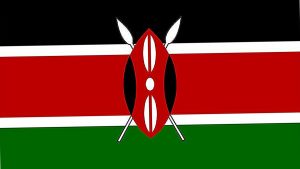
Kenya’s official languages include English, Kiswahili, and several indigenous dialects. Kenya’s population is young and growing fast. Kenya has risen from 2.9 million to approximately 40 million people in a century, with about three-quarters under 30. According to the 2009 World Factbook, Kenya’s population was Christian 83% (Protestant 47.7%, Catholic 23.4%, other Christian 11.9%), Muslim 11.2%, Traditionalists 1.7%, other 1.6%, none 2.4%, and unspecified 0.2%.
7. Guinea Bissau: The Republic of Guinea-Bissau borders the Atlantic Ocean, Senegal, and Guinea. Guinea Bissau ranks 154th globally with 44 persons per square kilometer. Bissau, the capital, has 388,000 residents. Bafata has 23,000 residents.
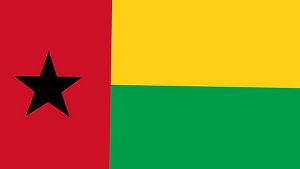
Guinea Bissau is multiethnic. The majority of the inhabitants, 30% Fula and 13% Mandinka, dwell in the north and northeast. Southern coastal Balanta (30%) and Papel (7%) dwell. Central and northern coastal Manjaco (14%) and Mancanha live. The remainder are Mesticos of mixed African and Portuguese heritage with a minor Cape Verdean population. 14% of Guinea Bissau’s population speaks Portuguese, the official language. 44% speak Portuguese-based Kriol, while the remainder speak multiple native African languages. Guinea Bissau is bordered by French-speaking nations, hence schools teach French. 10% are Christians and 50% are Muslims. 40% of inhabitants follow indigenous religions, while many others worship Islam and Christianity.
See also: Differences Between Alpha, Beta And Sigma Male
8. Republic Congo: The Congo Republic is ethnically diverse. 62 spoken languages. At 48%, the Kongo are the biggest ethnic group, including subgroups like the Laari of Brazzaville and Pool and the Vili of Pointe-Noire.
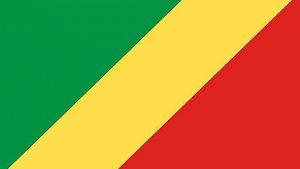
The Sangha (20%) in the north are the second-largest ethnic group, followed by the Teke (17%) north of Brazzaville. Pygmies make up 2%, whereas the northwest Boulangui and Brazzaville Boulangui make up 12%. Over 90% of Congolese practice Christianity. Sunni Islam is practiced by 1% of the population. Animism, vitalism, spirit and ancestor worship, sorcery, and witchcraft were extremely distinct from Christianity, yet the Congolese commonly mixed these beliefs with Christianity.
9. Ivory Coas: Ivory Coast has several ethnicities. 42% Akan. Indigenous Akans are not homogenous. Gur (17.6%), Northern Mandes (16.5%), Krous (11%), and Southern Mandes (10%) follow. Also, 30,000 Lebanese and 45,000 French. French, Lebanese, Vietnamese, Spanish, and U.S./Canadian missionaries make about 4% of the population.
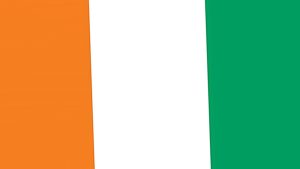
77% of Ivorians belong to numerous cultural and linguistic groups. Ivory Coast has 65 languages, although most Muslims speak Dyula. Ivory Coast natives are Muslim (38.6%), Christian (32.8%), and animist (28%). 20% of Ivory Coast’s population comes from Guinea, Burkina Faso, and Liberia.
10. Liberia: 16 indigenous ethnic groupings and various alien minorities. 95% are indigenous. The Gio (or Dan), Mano, Bassa, Kpelle, Grebo, Gbandi, Vai, Gola, Kru, Krahn, Mandingo (or Mandinka), Fante, Dei (or Dewoin), Bella, Mende, Loma, and Congo people are recognized ethnic groupings. Kpelle are the biggest group in central and western Liberia. 2.5% of Liberians are Americo-Liberians. 2.5% of the population are Congo and Afro-Caribbean slave descendants.
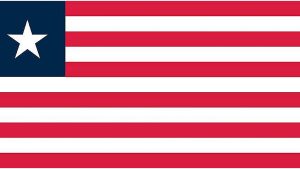
Liberia has many Lebanese, Indians, and West Africans. Monrovia has a big mulatto population due to Liberians marrying Lebanese. Liberia is 85.5% Christian despite having no governmental religion. 7.2% of Liberians are Catholic, while most are Protestant. Freed slaves introduced non-Protestant religions to the region. 12.2% are Muslims, mostly Malikite Sunnis. Shia and Ahmadiyya minority exist. Most non-Christians and Muslims are atheists.
See also: Why Nigeria Is Still underdeveloped: 11 Major Reasons
Finally, the nations with the most cultural variety demonstrate the beauty and durability of human society. These countries accept a diverse range of races, languages, faiths, and customs, resulting in vibrant and diversified settings. Cultural variety benefits society by encouraging tolerance, understanding, and the interchange of ideas. It serves as a source of pride and identity for these nations, demonstrating the peaceful cohabitation of many cultures inside their boundaries. In our increasingly linked globe, celebrating cultural variety is critical for establishing inclusive and vibrant communities.

Edeh Samuel Chukwuemeka, ACMC, is a lawyer and a certified mediator/conciliator in Nigeria. He is also a developer with knowledge in various programming languages. Samuel is determined to leverage his skills in technology, SEO, and legal practice to revolutionize the legal profession worldwide by creating web and mobile applications that simplify legal research. Sam is also passionate about educating and providing valuable information to people.